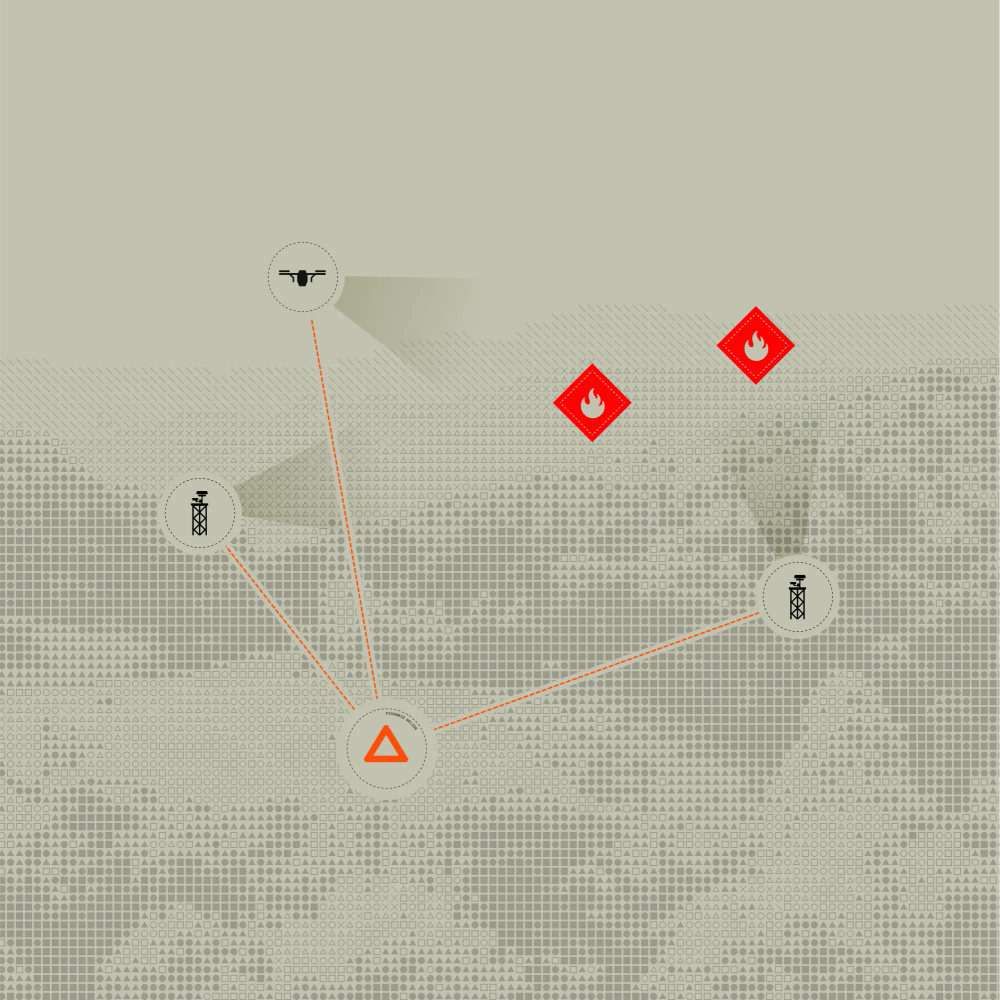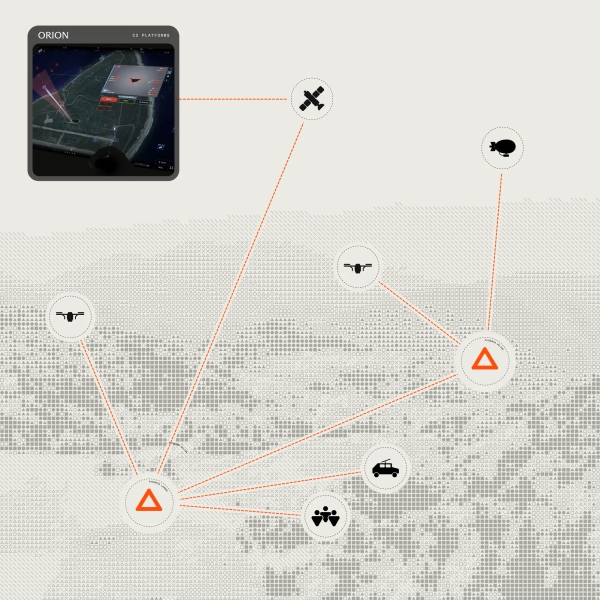
Wildfire Intelligence
Unify sensors and drones into a real-time system for faster wildfire detection and coordinated response.
Space & Intelligence
Enable real-time spectrum awareness by integrating fragmented RF sensing tools with broader intelligence systems.

Recent conflicts have shown that electromagnetic spectrum awareness is critical to modern operations. Low-cost software-defined radios (SDRs) and machine learning have made it possible to field RF sensors at the tactical edge—key for detecting unmanned aerial systems (UAS) and monitoring emissions in contested environments.
Today’s SIGINT landscape is fragmented. Multiple vendors provide strong tools for mission-specific tasks like UAS detection, but these systems often can’t share data. This limits the ability to form a real-time picture of the spectrum. At the same time, the Department of Defense (DoD) is working to integrate spectrum awareness into a common operational picture alongside other sensors, such as ground/overhead ISR and blue force tracking (BFT).
Picogrid enables a system-of-systems approach by integrating RF sensors from multiple vendors into a unified operational view. We don’t compete with hardware providers—we help them work together. Legion delivers a vendor-neutral API and data layer that standardizes outputs and enables real-time interoperability across spectrum sensing, emissions monitoring, and electronic warfare (EW).
This gives sensor vendors the freedom to focus on building their best capability while delivering faster. For the government, it means avoiding vendor lock-in and enabling a flexible, future-ready architecture for electromagnetic operations.
With Legion, SIGINT can be fused with video, radar, BFT, and other mission data—supporting full-spectrum awareness across domains and echelons.
Picogrid has partnered with leading spectrum sensing vendors to deliver cross-platform SIGINT interoperability. In early 2025, we were awarded a two-year contract to demonstrate RF integration and spectrum management for the Joint Force, with a focus on open standards, edge deployment, and unified situational awareness.
